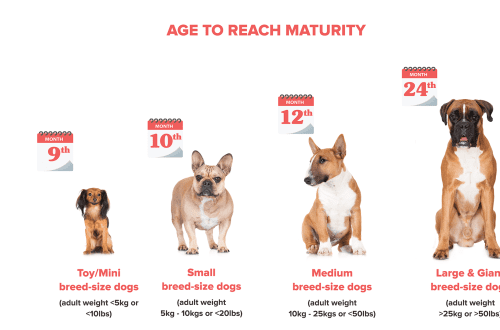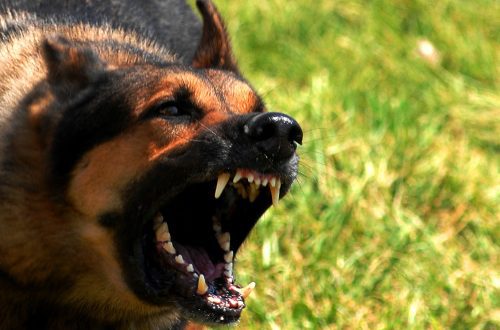
Auala e aoao ai se taifau le poloaiga "Fu!": faigofie ma manino
Mataupu
Why teach a dog the command “Fu!”
From the first days of the puppy’s stay in the house, you need to set boundaries so that the baby understands what not to do. Team Fu! refers to the basic and is required for the development of all breeds of dogs. Natural intelligence, pretty appearance and docile nature do not guarantee that someday the animal will not behave incorrectly. Raising a dog is the responsibility of its owner. To prevent the pet from harming itself or others, teach it the command “Fu!” and reinforce this skill.
With the help of the command “Fu!” you can stop the various actions of the dog, which sooner or later faces any owner.
- A pet can pick up food leftovers from the table, among which there are sharp small bones or foods that are contraindicated for him. In this situation, the command “Fu!” should sound immediately, because with a belated reaction of the owner, the dog will not spit out a tidbit, but will try to swallow it as quickly as possible.
- The desire of a dog to gnaw on shoes, furniture and wires is worth fighting from puppyhood. If you miss the moment, the pattern of behavior will be fixed, and it will be very difficult to get rid of it. The use of the command “Fu!” will save your nerves and finances.
- As a rule, all pets are very happy when their owners come home, and do not hesitate to express their delight. A bored dog waits for its owner at the doorstep, and when he comes in, he jumps on him, tries to lick his face and puts his paws on his clothes. If a “hospitable welcome” from a Chihuahua or a toy terrier does not bring big problems, then a Tibetan mastiff or alabai in a fit of feelings may well knock a person down and tear things apart. The same applies to pets that on the street begin to ask to be picked up and lean on the owner with dirty paws.
- Untrained dogs living in apartments may begin to bark at the slightest rustle outside the door. This is especially true for noisy breeds – standard schnauzers, beagles, dachshunds, Jack Russell Terriers. Constant barking will drive you and your neighbors crazy. In order for silence to reign in the house, it is enough for a well-mannered dog to hear “Fu!”.
- During a walk, a pet can find something interesting for itself on the ground – scraps, garbage or a piece of glass. In addition, in large cities there is a risk of stumbling upon treats stuffed with rat poison and intended for baiting yard dogs. For an animal that does not know the “Fu!” command, the consequences can be the saddest.
- Dogs have developed intuition and feel people. Passers-by are different. Drunk and smoking people, as well as deafeningly squealing children, can cause a negative reaction in a pet. Obeying instincts, the dog can bare his teeth and even throw himself at an annoying object. The “Fu!” command, given in a formidable voice, will allow you to avoid conflicts with passers-by and communication with the police. You should especially carefully monitor representatives of fighting breeds – Cane Corso, Argentinean Dogo, Bull Terrier – because in the event of an attack on a person, the dog will have to be euthanized.
This is not a complete list of problems that can be avoided by teaching the dog the “Fu!” command. However, there is one caveat – in the eyes of a pet, you must look consistent. If the dog is ready to put up with the fact that you can never pick up garbage, then total control over harmless actions like sniffing trees or benches, which are either prohibited or allowed, will cause him misunderstanding and unwillingness to obey.
How to teach a dog the “Fu!” command: step by step instructions
Cynologists recommend starting dog training with the “Fu!” on the street. Plan the route in advance, it should be familiar and calm, without crowds and heavy traffic. At the same time, the presence of a “prohibition” in the form of pigeons, pieces of food and garbage is welcome. In the following days, the road will need to be changed, and the more often, the better.
On a note: during the training of service dogs, specialists throw prohibited objects on the path along which the dog will go. You can also lay out the sausage circles in advance, or ask a friend to go ahead and do it unnoticed by the dog.
The first step in mastering the Fu! will be training on objects. Only after that it will be possible to hone the skill on contacts with animals and people. For walking you will need a standard leash.
Move along with the dog along the chosen route. The speed should be slow enough so that the pet has time to navigate the terrain and react to the situation. At some point, a pet walking on a sagging leash will notice an object of interest to it – ordinary garbage or a bait you left – and will go towards it. Strictly command him “Fu!” and pull the leash. It is important to calculate the strength of the jerk based on the size of your dog. If she does not respond to the command and again reaches for the forbidden thing, repeat “Fu!” and pull on the leash harder than the first time. In the case when the pet did not obey even on the second attempt, slap him on the pope or neck with a folded newspaper.
Continue walking – the dog should be distracted for a second, and then continue to follow you. After walking a few steps, stop, give your pet one of the previously learned commands (for example, “Sit!” or “Lie down!”), Praise and reward with a treat. The unexpected braking and jerking of the leash was a source of stress for the dog, and thanks to the new command and treat, he will switch attention and relax.
Important: never reward the dog for the command “Fu!”.
During the first walks, it is enough to command “Fu!” Five times. Do not overdo it, otherwise the pet will get tired. A skill can be considered fixed when a fluffy pet will always execute a command from the first repetition. Having stopped picking up prohibited items, the dog continues to learn the command “Fu!” in busy places. Now she must, on command, stop contact with relatives or people.
Having fixed the skill, proceed to the next step – train your pet at a distance. To do this, you need to replace the standard leash with a long one. You will no longer be able to spank your pet with a newspaper in case of disobedience, and he understands this very well. To teach a dog to execute the command “Fu!” from a distance of more than 10-15 meters, you will have to be patient and spend a lot of time.
After completing the exercise with a long leash, proceed to classes without a leash. First, give the command “Fu!” on a familiar deserted route, from a short distance. Then gradually make the task more difficult – similar to training with a leash.
The final stage is the consolidation of the “Fu!” team. In a situation where a command is needed, use it rather than drag the animal on a leash. This skill requires a consistent and systematic approach, do not forget to hone it regularly.
The difference between the teams “Fu!” and “No!”
A common misconception among dog owners is that the Fu! and “No!” – this is the same thing, respectively, it is enough to teach a pet only one of them. However, they are not interchangeable, although they serve to suppress undesirable dog behavior.
Teaching the command “Fu!” occurs before the “No!” command. Team Fu! means a strict ban. Certain actions the pet will never be allowed to do, such as tearing wallpaper, chewing on furniture, attacking relatives, or picking up garbage on the street.
Team “No!” used to temporarily disable and subsequently require a cancel command. If the dog acquires this skill, he will become disciplined and be able to overcome his natural instincts. To prevent the animal from attacking food and tearing it out of your hands, command “No!” before feeding, and after a while – “You can!”, “Eat!” or “Eat!” In the case of offering a thrown object, you can leave the pet motionless for several seconds with the word “No!”, And only then give the command “Aport!”.
Both commands must be fully executed, the first time. The difference in whether the ban will be temporary or permanent does not make the command “No!” less important than “Fu!”.
O le a le mea e le faia i le taimi o toleniga
Having made a number of missteps, you can nullify all progress in teaching the dog the command “Fu!”. But, as the Latin wisdom says: “Forewarned is forearmed”, so let’s look at the most common mistakes.
- You can’t teach a puppy the command “Fu!” in parallel with the execution of another command. This is a difficult skill that the pet needs to fully focus on. Also, do not quit studying the “Fu!” command without going through all the stages and do other exercises.
- While practicing the command, keep track of how fast you are walking. If you are distracted, you can speed up the pace too much, and it will be more difficult to control the dog’s behavior. It will also be more difficult for a four-legged friend to understand what they want from him.
- In the process of training, take breaks, it is enough to repeat the command once every 10 minutes.
- It is important to remember that the Fu! means a complete and permanent ban, not a call to slow down. Do not use it when a different command is required. For example, if a pet does not give you a shoe, command “Give it!”; when the dog pulls on the leash, say “next!”.
- Another typical mistake is the belated command “Fu!”. When the animal is completely carried away by prohibited actions, it will be problematic to stop it only with the help of a command. So, commanding “Fu!” in the midst of a dog fight, you will achieve nothing but a lowering of your own authority – the dogs need to be pulled apart.
- Do not overuse the command “Fu!”. It serves to prohibit unwanted behavior at a particular point in time. Beginner dog breeders often try to ban all activities that they consider potentially harmful or dangerous, up to sniffing the bench.
- Without good reason, do not use too strong jerks on the leash. Pets should not be yelled at or beaten. This can harm the psyche of the animal, and you will lose contact with him.
If you show firmness and perseverance, but do not go beyond the limits in punishment, you command in a timely manner and for good reason, and then work on consolidating the skill, you will definitely succeed in teaching the dog the “Fu!” command.
Fautuaga mo cynologists
If you are unable to train a pet on your own, contact a specialist, but do not quit training. Classes with a cynologist will help to correct the behavior of the dog. You may need some professional advice.
The dog does not respond to the jerk of the leash – what to do?
During the training team “Fu!” the dog may not respond to the jerk of the leash and, accordingly, it does not stop it, which is why all the efforts of the owner go down the drain. This usually applies to large and giant breeds of dogs – Great Dane, Newfoundland, Bobtail. In this case, you can use a special metal collar with spikes or a harness that works on microcurrents. A slap with a newspaper will also work.
The main thing is to always follow the sequence: the “Fu!” – a jerk of the leash – a slap with a newspaper. If during pulling the leash a strict collar disciplines the dog, then it is no longer necessary to use the newspaper.
If the puppy shows disobedience, and there is no way to influence him with a leash, lift the pet by the collar and shake it slightly, then put it on the ground, pressing on the shoulder blades. This is how you show your dominance.
How to teach the team “Fu!” puppy?
It is not recommended to teach the command “Fu!” puppies under 3 months of age. In the range of 3 to 6 months, you can start training at home, in an easy way. The main thing is to keep the baby’s psyche stable and not subject him to stress.
Start training with the “Give!” command. When the puppy picks up a forbidden object from the floor, squat down, extend your hand forward with your palm up and say “Give it!” (“Give it back!”). When the baby gives you the thing he picked up, praise him and give him a treat.
If the dog does not respond to the command and does not want to part with the object, gently open the mouth and pull it out. After that, reward your pet with a piece of something tasty.
Over time, begin to occasionally replace the command “Give!” to “Fu!” Speak the word in a calm voice, in the same key. So, a puppy will get used to obedience from childhood, and it will be easier to start street training.
Do I need to teach the team “Fu!” an adult dog?
If you took a mutt from the street, or you got an untrained dog as an adult, you should definitely teach it to perform the “Fu!” command. The learning process can be quite difficult, because you have to deal with an animal that has developed a certain model of behavior, a character has already been formed, there is no genetic predisposition to training.
Despite this, work hard with your pet, because yard and abandoned dogs are far from both following commands and basic education – they can eat from the trash, show aggression towards animals. If you have any difficulties, do not leave your pet – dog handlers will definitely help you.





